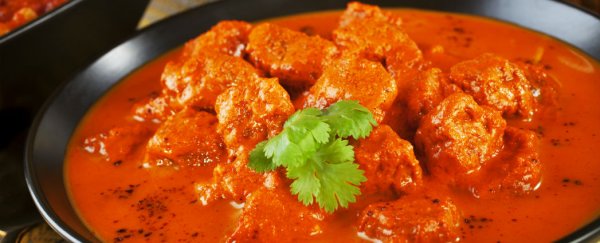Scientists at the Indian Institute of Technology Jodhpur have come up with a reason, according to science, for why Indian food tastes so good. And strangely enough, it actually goes against the principle that made British chef Heston Blumenthal so famous, known as 'food pairing'.
The basis of food pairing is that foods, whether they're sweet and savoury, can work together in a recipe if they contain the same types of flavours. So while white chocolate and caviar might not seem like the best choice to throw toughener in a dish, Blumenthal tried it out with the food pairing theory in mind, and it worked beautifully. Writing for The Guardian in 2002, Blumenthal said he went to his friend, François Benzi, who works for flavourings and perfumes company Firmenich, for answers.
"The response was that both the chocolate and caviar contain high levels of amines," Blumenthal said. "These are a group of proteins that have broken down from their amino acid state but not so far as to become ammonia. Amines contribute to the desirable flavours that we find in cooked meats and cheeses, among other things."
The same principle is at play in Blumenthal's recipe for beetroot and green peppercorn jelly with mango and pine purée.
But when a team of Indian scientists specialising in biomedical text mining examined the molecular structure of thousands of Indian recipes, they found that the flavours in the ingredients most commonly used together really didn't match up at all. In fact, in some dishes, the spices that make them what they are actually strengthened this 'negative food pairing' effect.
They looked at 2,543 dishes in eight different sub-cuisines - Bengali, Gujarati, Jain, Maharashtrian, Mughlai, Punjabi, Rajasthani and South Indian - and found that together they contained a total of 194 unique ingredients, which they separated into 15 categories: spice, vegetable, fruit, plant derivative, nut/seed, cereal/crop, dairy, plant, pulse, herb, meat, fish/seafood, beverage, animal product, and flower. While some dishes contained a whopping 40 different ingredients, the average number was seven.
The data scientists then came up with a 'flavour network' to figure out which ingredients were linked on a molecular level, and where they appear in the different dishes.
The first thing they discovered was that the cuisine as a whole was characterised by strong negative food pairing - so the complete opposite of what Blumenthal is doing. "They also found that specific ingredients dramatically effect food pairing," MIT's Technology Review reports. "For example, the presence of cayenne pepper strongly biases the flavour sharing pattern of Indian cuisine towards negative pairing. Other ingredients that have a similar effect include green bell pepper, coriander, garam masala, tamarind, ginger, cinnamon and so on."
"Our study reveals that spices occupy a unique position in the ingredient composition of Indian cuisine and play a major role in defining its characteristic profile," the team writes in a pre-published version of their study on arXiv.org.
The differentiating factor that could have made Indian cuisine so different from other cuisines around the world is that some of the ingredients began as medicinal, rather than flavour, additives. "We conclude that the evolution of cooking driven by medicinal beliefs would have left its signature on traditional Indian recipes," the researchers say.
Not that we need science to tell us that Indian food is amazing, but it's always fun when it does.
Source: Technology Review
